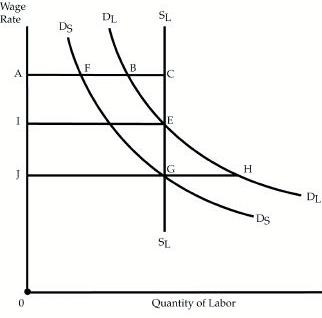America's Great Depression - Chapter 2

This is a 10-question quiz on Chapter 2: Keynesian Criticisms of the Theory from America's Great Depression by Murray Rothbard.
- 1.
According to Rothbard, which of the following is NOT a man’s possible allocation of his monetary assets?
- A.
Spend money on consumption
- B.
Spend money on investment
- C.
Increase his money hoard
- D.
Add to cash balance
Correct Answer
C. Increase his money hoard -
- 2.
What is a Keynesian "Liquidity Trap"?
- A.
When demand for money is so high that interest rates cannot fall low enough to sufficiently increase investment.
- B.
When inflation and unemployment both increase at the same time.
- C.
When the total supply of money in the economy is trapped within a certain range above or below which the central bank cannot increase or decrease it.
- D.
When the amount owed on a mortgage is greater than the value of the property to which the mortgage is applied.
Correct Answer
A. When demand for money is so high that interest rates cannot fall low enough to sufficiently increase investment. -
- 3.
Keynesians believe that people expect a rise in the rate of interest in a financial crisis and will therefore hoard money instead of purchasing bonds and contributing toward lower rates. This ______ _____ constitutes the “liquidity trap,” and is supposed to indicate the relation between liquidity preference and the interest rate.
Correct Answer
speculative hoard
speculative horde
speculative hoarding - 4.
According to the Keynesians, what does hoarding reduce?
- A.
Savings
- B.
Consumption
- C.
Investment
- D.
Consumption and Investment
Correct Answer
C. Investment -
- 5.
Upon what does the Keynesian concept of the contrary link between inflation and unemployment rest?
- A.
The Law of Supply and Demand
- B.
The Labor Theory of Value
- C.
The Theory of Wage Cycle
- D.
The Money Illusion of Labor.
Correct Answer
D. The Money Illusion of Labor. -
- 6.
Regarding what specific commodity do Keyensians reject the application of the Law of Supply and Demand?
- A.
Gold
- B.
Money
- C.
Labor
- D.
Capital
Correct Answer
C. Labor -
- 7.
If the supply for labor is the SL-SL line and the demand for labor is DL-DL, what will be the consequence of artificially raising the wage rate from the equilibrium point to A?
- A.
BC workers will lose their jobs.
- B.
The SD curve will shift from DL to DS.
- C.
BE workers will receive higher wages.
- D.
Workers in the EGH triangle will be unemployed.
Correct Answer
A. BC workers will lose their jobs. -
- 8.
What do the Keynesians believe is the primary problem of falling wage rates as it relates to economic growth?
- A.
Falling wage rates will reduce income tax revenues, thus reducing government spending.
- B.
Falling wage rates will raise interest rates, thus inhibiting the important housing market.
- C.
Falling wage rates will reduce consumption in favor of savings.
- D.
Falling wage rates will increase debt.
Correct Answer
C. Falling wage rates will reduce consumption in favor of savings. -
- 9.
How does reducing the hours worked and "spreading the work" tend to prolong unemployment?
- A.
It reduces the amount of money workers can spend, thus reducing consumption.
- B.
It reduces the pressure on the price of wages.
- C.
It makes workers less productive.
- D.
It reduces inflation, which inherently increases unemployment.
Correct Answer
B. It reduces the pressure on the price of wages. -
Quiz Review Timeline +
Our quizzes are rigorously reviewed, monitored and continuously updated by our expert board to maintain accuracy, relevance, and timeliness.
-
Current Version
-
Mar 20, 2022Quiz Edited by
ProProfs Editorial Team -
Nov 15, 2008Quiz Created by
Voxday
- Alaska Quizzes
- California Quizzes
- Colorado Quizzes
- Executive Branch Quizzes
- Florida Quizzes
- Hawaii Quizzes
- Iowa Quizzes
- Louisiana Purchase Quizzes
- Massachusetts Quizzes
- Michigan Quizzes
- Mississippi Quizzes
- Missouri Quizzes
- New Jersey Quizzes
- New York Quizzes
- North Carolina Quizzes
- Ohio Quizzes
- Oklahoma Quizzes
- Oregon Quizzes
- Pennsylvania Quizzes
- Texas Quizzes
- United States Constitution Quizzes
- US Citizenship Quizzes
- US City Quizzes
- US Immigration Quizzes
- Vermont Quizzes
- Virginia Quizzes
- Wisconsin Quizzes
 Back to top
Back to top


